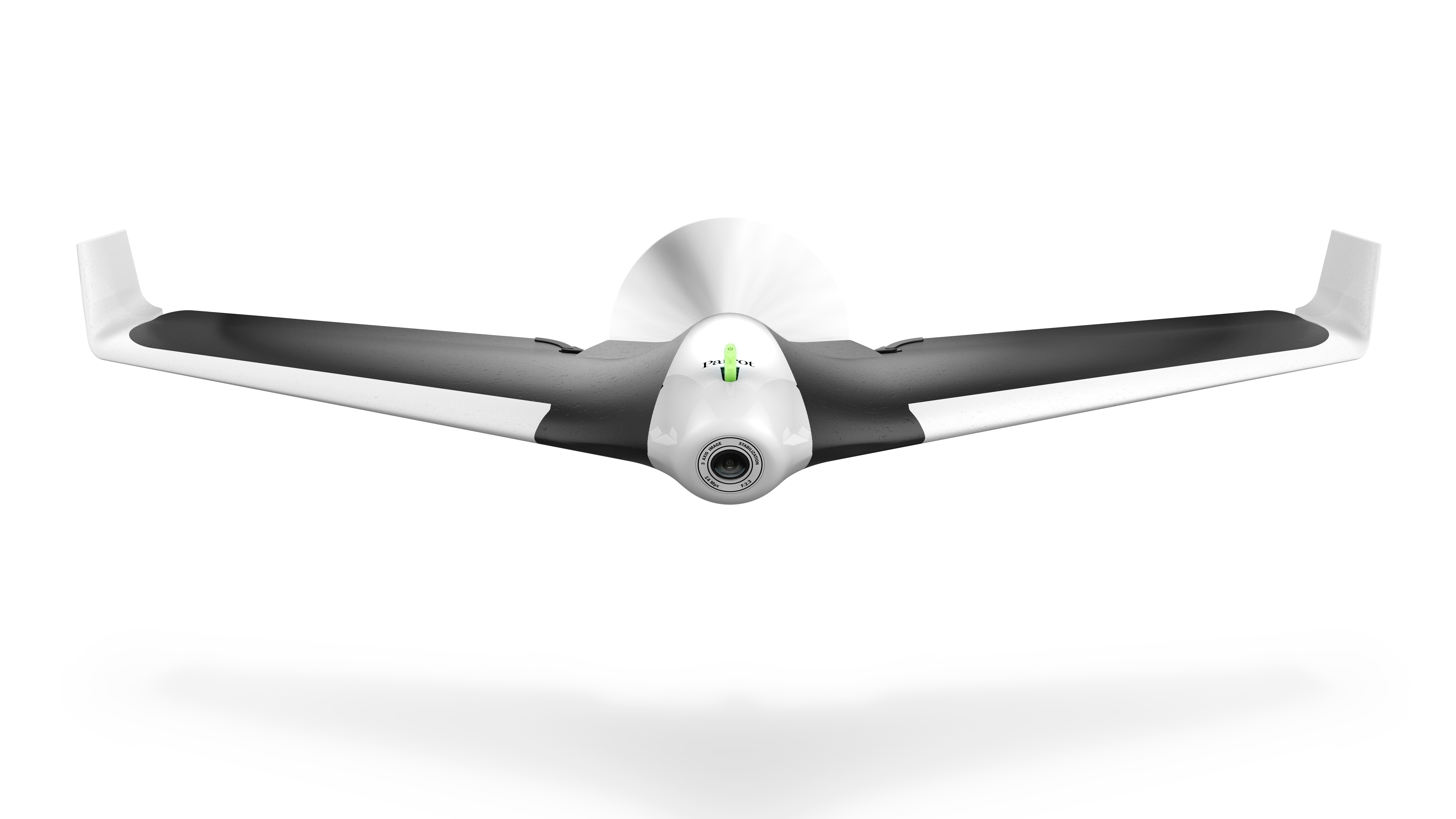Parrot's fixed-wing Disco drone soars in September, first-ever headset included
A headset for more immersive flight

Today Parrot heralded the release of Disco, the first fixed-wing drone that can also fly itself and brings the action right to pilots' eyes - literally.
It's astounding just how far the technology's come in the past few months - and what's been added. At this year's CES, the French firm showcased the Disco prototype, and now it's ready to fly to consumers starting next month in the US.
One of the most striking features of the Disco is how you send it soaring; all you have to do is grab hold and toss it like a Frisbee, and it will automatically take off, ascending all on its own. Once airborne, the Disco can reach up to 50 mph and fly for 45 minutes. Weighing only 1.6 pounds (about 3 kilograms), it should be easy for anyone to lift.
There's no need to be an experienced pilot with the Parrot Disco, and software and design features take the unsteadiness of quad-copters out of the equation. The Disco takes off and lands automatically, and an autopilot function helps control it in-flight. The drone will fly to an altitude of 164ft, then circle until it's told otherwise.

Autopilot prevents the drone from performing maneuvers that would bring it down, while sensors like an accelerometer, barometer and gyroscope along with triple-axis digital stabilization keep it steady during flight. Disco will even return to its takeoff position based on its GPS.
Parrot, it seems, is making it easier for even the biggest klutz to take to the air. At this rate, fully autonomous drones can't be too far off.
Turn your headset
What we didn't see at CES is Parrot's new Cockpitglasses, a first for the company.
Sign up for breaking news, reviews, opinion, top tech deals, and more.
The drone maker's first-person view (FPV) headset will stream whatever the Disco's Full HD front camera sees straight to the pilot's view. You'll need an copilot present when you're wearing it to meet regulations, Parrot does warn.
To use the Cockpitglasses, stick either an iPhone or Android smartphone into the headset, and stream live video fed from Disco's 14MP front lens. The stable, wide-angle view follows the Disco's flight path, so it's like you're in the cockpit of the drone, Parrot says.
If you'd like to save what you see, Disco includes 32GB of memory.

Headsets aren't something we've seen many other consumer drone makers dabble into. We'll try a pair on for ourselves to see how good the images are and whether Cockpitglasses gives you a true sense of being inside the drone, but it's a promising feature.
You're in control - sort of
The Disco connects to the Parrot ecosystem through Wi-Fi, and users will pilot it with the Skycontroller 2 control pad or the FreeFlight Pro app on their smartphone or tablet.
The Skycontroller 2 weighs as much as the Disco, and customizable buttons should make for easy execution of actions as you fly. There's even a "takeoff/landing" button users can push on the controller to perform those tasks.

Video from the Disco can stream to the FreeFlight Pro, if you're not in a headset-wearing mood. You can customize your settings, such as geofencing, altitude/distance limits, speed and Wi-Fi management, via the app as well.
Those who prefer to fly on their own can using their own RC controller, however, meaning the Disco can go into either automatic or manual modes.
The Parrot Disco drone will retail for $1,299/£1,149.99. The price, though steep, includes a Skycontroller 2 and a pair of Parrot Cockpitglasses.
Michelle Fitzsimmons contributed to this report